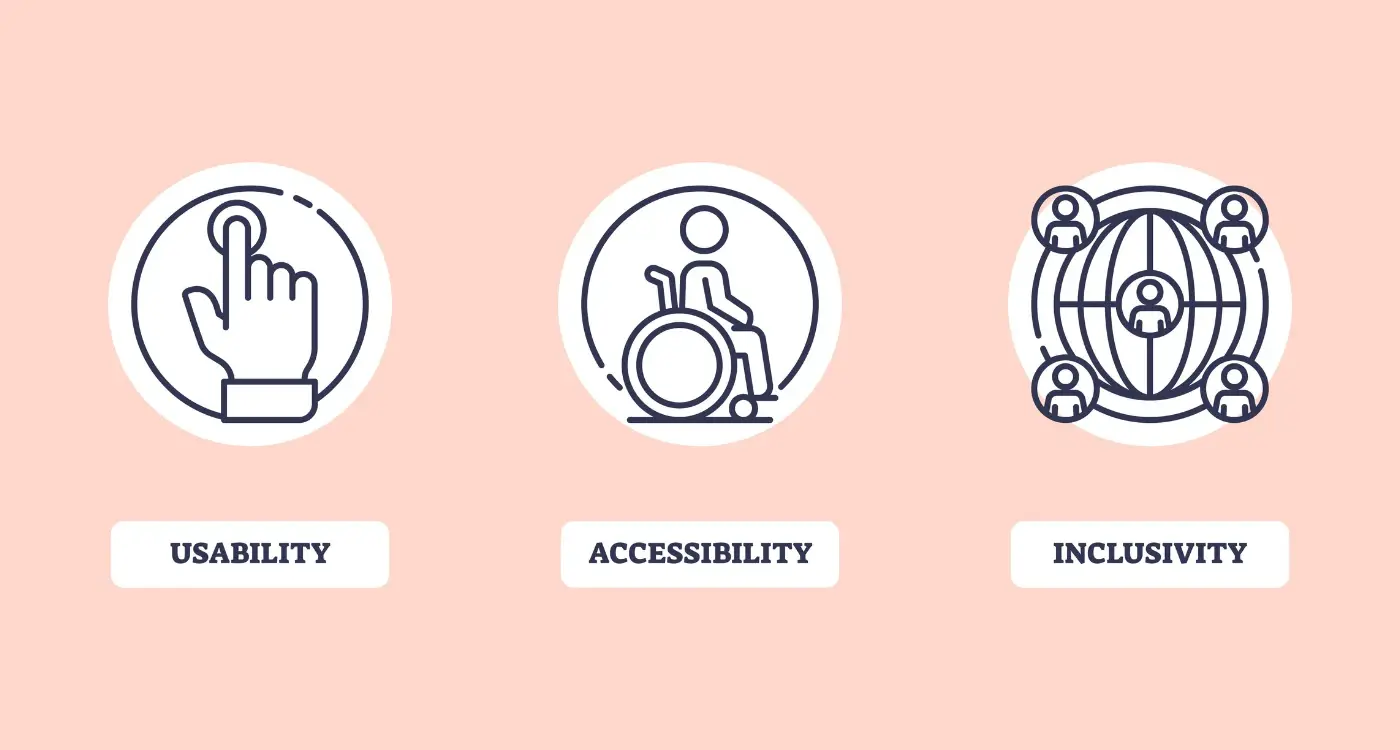How Do I Personalise The Onboarding Experience For Different Users?
Around 70% of mobile app users abandon an app after just one session. That's a staggering number when you think about it—seven out of ten people download your app, open it once, and never come back. The culprit? Poor onboarding experiences that treat every user exactly the same.
Most apps still use the one-size-fits-all approach to onboarding. They show the same screens, ask the same questions, and present the same features to everyone. But here's the thing—your users aren't all the same. A teenager downloading your fitness app has completely different needs than a 45-year-old professional. A small business owner using your productivity tool needs different guidance than a freelancer.
The most successful mobile apps don't just personalise the experience after onboarding—they start personalising from the very first tap
User segmentation in UX design isn't just about collecting data; it's about understanding that different people need different journeys. When you personalise the onboarding experience, you're not just showing users how to use your app—you're showing them why it matters to them specifically. This guide will walk you through creating onboarding experiences that speak directly to your users' needs, turning that 70% abandonment rate into engaged, long-term users who actually stick around.
Understanding Your Users Before They Even Start
The biggest mistake I see app developers make is trying to personalise their onboarding without actually knowing who their users are. You can't create a tailored experience for someone if you don't understand what drives them, what frustrates them, or what they're hoping to achieve with your app.
Before you write a single line of onboarding code, you need to gather real data about your potential users. This means looking at analytics from your website, conducting surveys, and—most importantly—talking to actual people who might use your app. I always tell my clients that assumptions are the enemy of good user experience.
Start with the data you already have
Your website analytics can tell you loads about user behaviour patterns. Are people dropping off at certain pages? What devices are they using? Which marketing channels bring in the most engaged visitors? This information becomes the foundation for understanding different user types.
Ask the right questions
When you do speak to potential users, don't just ask what features they want. Ask about their daily routines, their pain points, and what success looks like to them. These deeper insights will help you create onboarding experiences that actually resonate with different user groups rather than treating everyone the same way.
Creating User Groups That Actually Matter
After years of working on mobile app projects, I've seen countless teams get excited about user segmentation only to create groups that sound impressive but don't actually help anyone. The fitness app that segments users by "age and location" when what really matters is whether they're beginners or advanced athletes. The shopping app that groups people by spending habits when the real divide is between bargain hunters and convenience seekers.
The secret to effective user segmentation isn't demographics—it's understanding what people are trying to achieve with your app and how they prefer to get there. Some users want to jump straight into the main features whilst others need their hand held through every step. Some are tech-savvy power users; others get overwhelmed by too many options at once.
Building Groups That Drive Design Decisions
Your user groups should directly influence your UX design choices. Each segment needs to answer one simple question: how should we treat this type of user differently during onboarding? If you can't answer that, your groups aren't useful yet.
- New users who need guidance and explanation
- Experienced users who want to get started quickly
- Users with specific goals or use cases
- Users who prefer different interaction styles
Start with just 2-3 user groups for your first personalised onboarding experience. You can always add more complexity later, but getting the basics right first will save you months of headaches.
Remember, the best user groups are the ones that actually change how you design your onboarding flow—not just how you label your users in analytics.
Designing Different Paths for Different People
Now that you've worked out who your users are and what they need, it's time to build different onboarding journeys for each group. This is where things get interesting—and where many apps get it wrong.
Think of it like this: you wouldn't give the same tour of a museum to a five-year-old and a university professor, would you? The same applies to your app. A tech-savvy teenager doesn't need the same hand-holding as someone who's never used a smartphone before.
Start with the Basics
Begin by mapping out what each user group needs to know to get value from your app quickly. Your power users might want to skip straight to advanced features, whilst beginners need step-by-step guidance. Don't make everyone sit through the same lengthy tutorial—it's frustrating for experienced users and overwhelming for newcomers.
Keep It Simple but Smart
The trick is creating these different paths without making your app complicated to build or maintain. Use progressive disclosure—show people what they need when they need it. You can always offer optional tips or advanced features later, but get them to that first "wow" moment as quickly as possible.
Remember, the goal isn't to show off every feature you've built; it's to help each person understand why your app matters to them specifically.
Making Sign-Up Feel Personal Without Being Creepy
There's a fine line between helpful personalisation and making users feel like they're being watched. I've seen countless mobile apps get this wrong—asking for too much information upfront or making assumptions that feel invasive. The key is understanding that personalisation should feel like a natural conversation, not an interrogation.
Start by asking only what you absolutely need to know. If you're building a fitness app, asking about fitness goals makes sense; asking for their favourite colour doesn't. Each question should serve a clear purpose for the user experience, not just your marketing team's wish list.
Timing Is Everything
The best personalised sign-up flows reveal themselves gradually. Ask one or two questions at a time rather than presenting a massive form. This approach—known as progressive profiling—lets users ease into sharing information without feeling overwhelmed.
The moment a user feels like they're giving away more than they're getting back, you've lost them
Smart user segmentation happens when you combine what users tell you with what they actually do. Watch their behaviour patterns during onboarding and use that data to create meaningful user groups. Someone who skips through tutorials quickly might be experienced; someone who reads everything might be new. Both need different approaches, and good UX design accommodates both without making anyone feel excluded.
Showing Users What They Need to See First
Getting the first screen right after someone signs up is probably one of the hardest parts of personalised onboarding. You've got about three seconds before they decide whether your app is worth their time—and that's being generous! The key is showing them something that feels immediately relevant to why they downloaded your app in the first place.
Start with Their Primary Goal
Think about what each user group wants to achieve first. A fitness app user who said they want to lose weight shouldn't see a screen about building muscle mass. Someone who downloaded a budgeting app to track expenses doesn't need to see investment advice straight away. This sounds obvious, but you'd be surprised how many apps dump everyone into the same generic dashboard.
Progressive Disclosure Works Wonders
Don't overwhelm people with every feature your app has—even if they're all brilliant! Show them one or two things that matter most to their specific situation. A project management app might show team leaders how to create projects first, whilst showing team members how to view their assigned tasks. You can always introduce more features later once they're comfortable.
The golden rule here is relevance over completeness. Better to show three perfectly matched features than fifteen generic ones that might confuse them. Consider using empty states in your mobile app design to guide users toward relevant actions rather than leaving them staring at blank screens.
Testing Your Personalised Onboarding with Real People
You've built what you think is brilliant personalised onboarding, but here's the thing—your opinion doesn't matter. What matters is whether real users can actually get through it without wanting to delete your mobile app immediately. I've seen too many development teams fall in love with their own clever user segmentation ideas, only to watch actual users get completely confused by them.
Start with just five people from each user group you've created. That's it. Don't overthink this part. Give them your app, tell them nothing about how it works, and watch what happens. You'll be amazed at how quickly they'll find problems you never considered. Pay attention to where they pause, where they tap the wrong thing, and—most importantly—where they give up entirely.
Record their faces, not just their screens. You'll learn more from a confused expression than from any analytics dashboard.
What Actually Matters During Testing
Forget about whether they like your colour scheme or logo placement. Focus on whether they understand what they're supposed to do next and whether your UX design actually guides them through the process. If someone from your target user group can't figure out how to complete the onboarding within two minutes, you've got work to do. The best personalised onboarding feels invisible—users should feel like the app just gets them, without realising how much work went into making that happen.
Common Mistakes That Kill Personalised Onboarding
After years of building onboarding flows for different apps, I've seen the same mistakes crop up again and again. The funny thing is, most teams think they're being clever when they make these errors—but they're actually driving users away without realising it.
The biggest mistake I see is asking for too much information upfront. You know those apps that want your name, email, phone number, location, favourite colour, and your grandmother's maiden name before you've even seen what the app does? That's a conversion killer right there. People will bounce faster than you can say "personalisation".
The Most Common Onboarding Killers
- Asking for personal details before showing any value
- Creating user groups that are too broad or meaningless
- Showing the same generic tour to everyone
- Making assumptions about what users want based on demographics alone
- Forgetting to test different onboarding paths with real users
- Overwhelming new users with too many choices at once
Another trap teams fall into is over-personalising too early. Yes, you want to be relevant, but asking someone their relationship status when they're just trying to download a fitness app feels intrusive. Start small, learn gradually, and build trust before you dig deeper into personal preferences. This is one of the key factors that separates stellar apps from so-so apps.
Conclusion
After working with countless mobile app projects over the years, I can tell you that personalised onboarding isn't just a nice-to-have feature—it's become something that separates successful apps from the ones that get deleted after a few days. When you take the time to understand your users and create different paths for different people, you're showing them that you actually care about their experience.
The beauty of personalised onboarding lies in its simplicity. You don't need to overcomplicate things with fancy algorithms or creepy data collection. Sometimes the best approach is just asking users what they want and then giving it to them. User segmentation doesn't have to be rocket science; it just needs to make sense for your specific app and audience.
Good UX design means thinking about the person on the other side of the screen. They've just downloaded your app, probably whilst doing something else, and they want to get value from it quickly. If you can guide them to that "aha moment" faster by showing them relevant content and features, you've won half the battle.
Remember to test everything with real people—not just your team or your mum. What makes perfect sense to you might be completely confusing to someone else. Keep iterating, keep improving, and most importantly, keep listening to your users.
Share this
Subscribe To Our Learning Centre
You May Also Like
These Related Guides

Why Should I Choose Behavioural Design For My App?

How Can I Tell If My App's Design Matches User Expectations?



